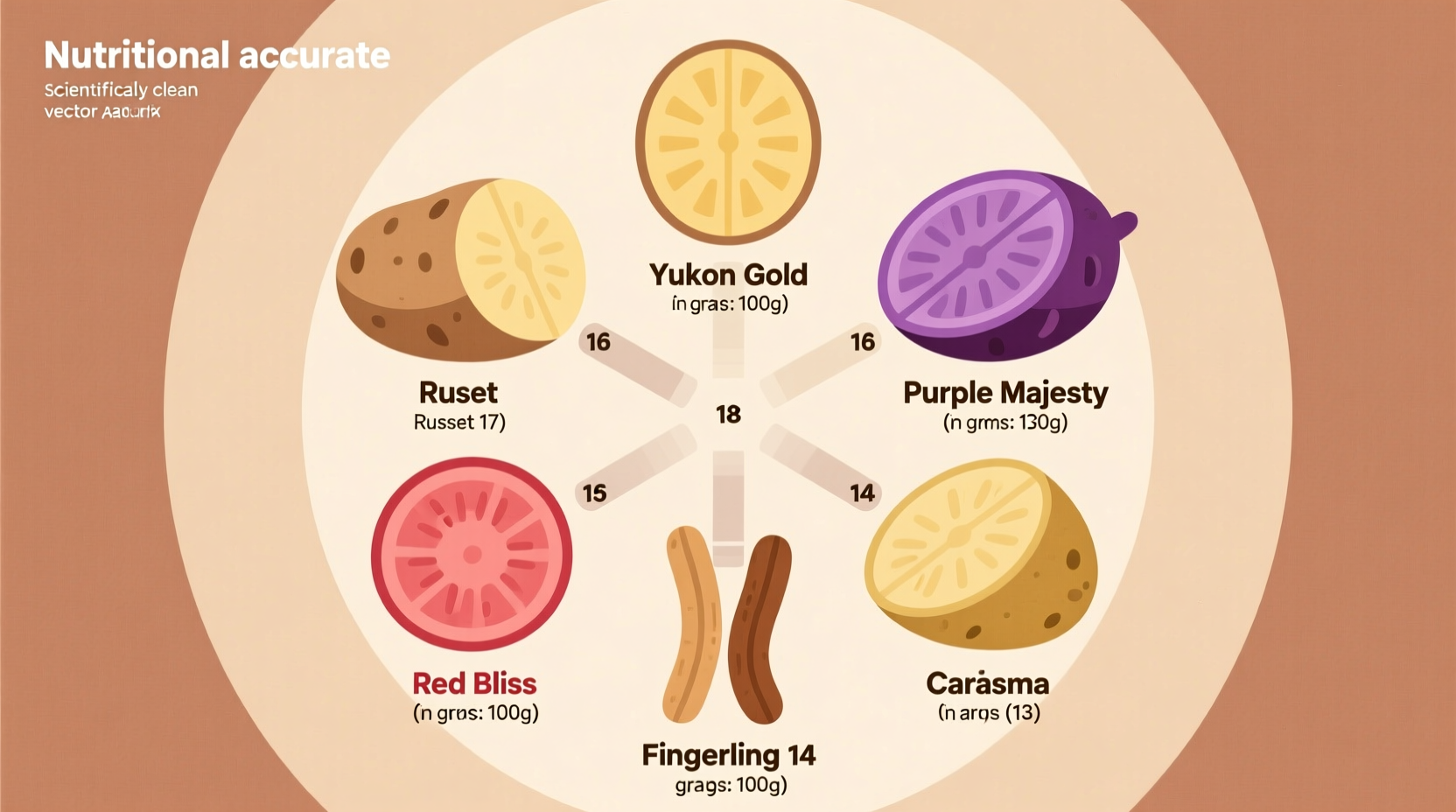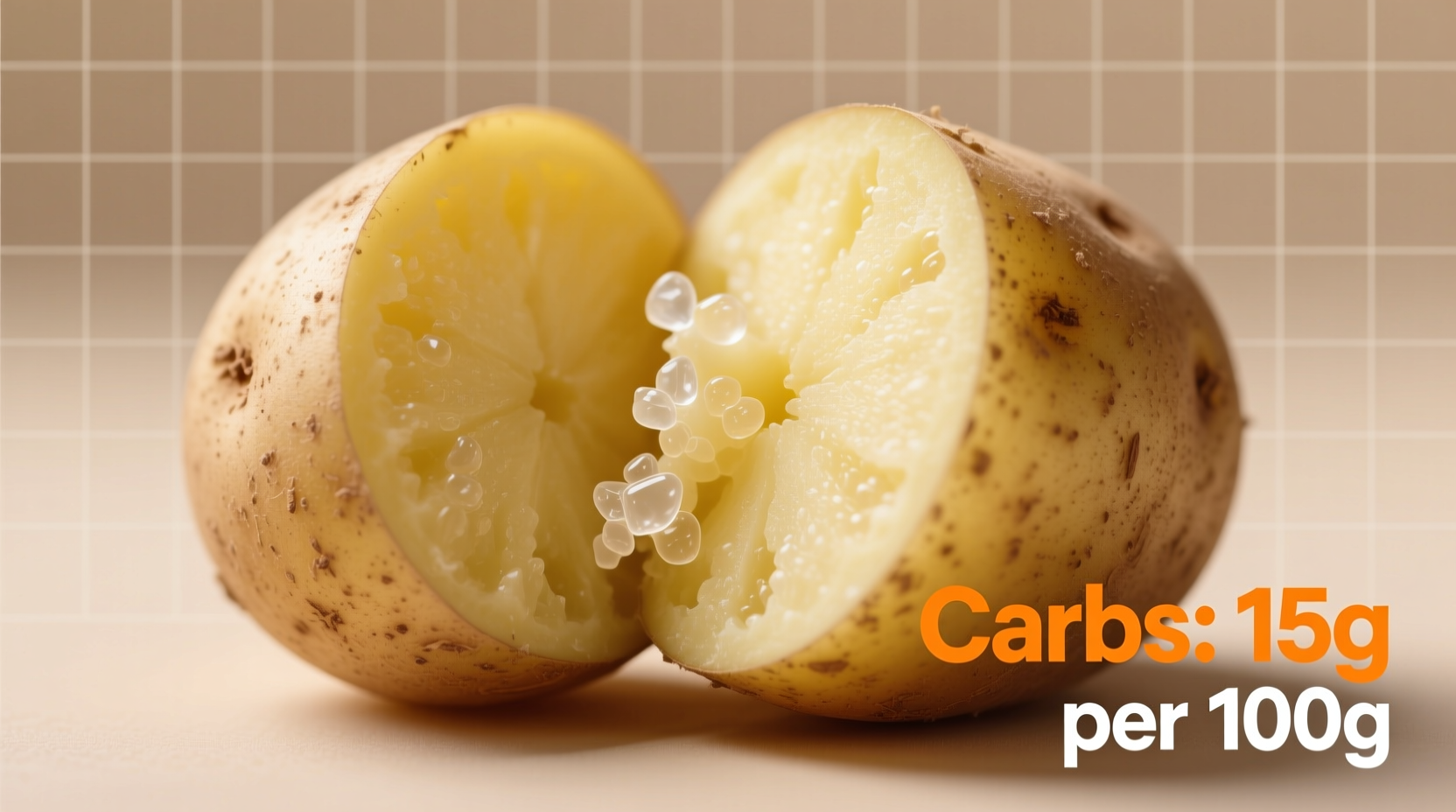Why Potato Carbohydrates Matter for Your Diet
When you're tracking your daily carbohydrate intake, knowing the precise carb content in potatoes helps you balance nutrition without unnecessary restriction. Potatoes aren't just simple carbs—they deliver essential vitamins, minerals, and resistant starch that supports gut health. The key is understanding how preparation methods and potato varieties affect their nutritional profile.
Breaking Down Potato Carbohydrates: What's Really Inside
Carbohydrates in potatoes consist of three components that impact your body differently:
- Starch (80-90% of total carbs) - Provides sustained energy release
- Sugars (1-2%) - Naturally occurring glucose and fructose
- Fiber (2-3g per medium potato) - Supports digestion and blood sugar control
Unlike refined carbohydrates, potatoes contain resistant starch—a type of fiber that resists digestion in the small intestine. This valuable component increases when you cook and cool potatoes, making potato salad a surprisingly gut-friendly option.
Potato Varieties Compared: Carb Content at a Glance
| Potato Type | Carbs (per 150g) | Fiber (g) | Glycemic Index | Best Preparation Method |
|---|---|---|---|---|
| Russet | 29g | 2.1 | 85 | Boiled with skin |
| Sweet Potato | 27g | 3.3 | 44 | Steamed |
| Yukon Gold | 26g | 2.0 | 65 | Roasted |
| Red Potato | 24g | 2.2 | 58 | Cooled after boiling |
| Fingerling | 23g | 2.4 | 60 | Steamed |
Data sourced from USDA FoodData Central (2023 database), the official nutritional reference database maintained by the United States Department of Agriculture.
How Cooking Methods Transform Potato Carbs
The way you prepare potatoes significantly impacts their carbohydrate profile and how your body processes them:
- Boiling with skin on preserves more nutrients and creates resistant starch when cooled
- Baking concentrates natural sugars, slightly increasing glycemic impact
- Frying adds substantial calories but doesn't significantly change carb count
- Cooling after cooking increases resistant starch by up to 300%
For example, a study published in the Journal of Agricultural and Food Chemistry demonstrated that cooling boiled potatoes for 24 hours increased their resistant starch content from 3.5% to 12.4%, effectively reducing their glycemic impact while boosting gut health benefits.

When Potatoes Fit Perfectly in Your Diet Plan
Understanding the context boundaries for potato consumption helps you make informed choices:
- Active individuals benefit from potato carbs as quality energy sources before workouts
- Diabetes management works best with cooled red or Yukon Gold varieties (lower glycemic index)
- Weight management succeeds when pairing potatoes with protein and healthy fats
- Keto diets typically exclude potatoes but may include small portions of fingerlings occasionally
The Dietary Guidelines for Americans 2020-2025 recognizes potatoes as part of a healthy dietary pattern when prepared without added fats, sugars, or sodium. The key is portion control and preparation method—a single serving equals one small potato (about 150g) or half a cup of cooked cubes.
Debunking Common Potato Carb Myths
Several misconceptions persist about potatoes and carbohydrates:
- Myth: All potato carbs are "bad" and cause weight gain Truth: Potatoes contain complex carbohydrates with valuable nutrients—weight impact depends on preparation and portion size
- Myth: Sweet potatoes are always healthier than white potatoes Truth: Both offer unique nutritional profiles—white potatoes provide more potassium while sweet potatoes offer more vitamin A
- Myth: Removing potato skin eliminates carbs Truth: Most carbs are in the flesh—the skin contains valuable fiber that actually helps moderate blood sugar response
Practical Tips for Smart Potato Consumption
Implement these evidence-based strategies to enjoy potatoes while managing carbohydrate intake:
- Always eat potatoes with their skin for maximum fiber content
- Cool cooked potatoes before eating to increase resistant starch
- Pair with protein sources like chicken or fish to slow glucose absorption
- Choose smaller portions of higher-carb varieties like Russets
- Track your personal response using a glucose monitor if managing blood sugar
Registered dietitians often recommend the "plate method" for balanced meals: fill half your plate with non-starchy vegetables, one-quarter with lean protein, and one-quarter with starchy vegetables like potatoes. This approach naturally controls carbohydrate portions while ensuring nutrient diversity.
Historical Context: Potatoes Through the Ages
Understanding the historical journey of potatoes reveals why they became such an important carbohydrate source worldwide:
- 8000 BCE: First domesticated in the Andes mountains of South America
- 1536: Spanish conquistadors bring potatoes to Europe
- 1700s: Potatoes become staple food across Europe during famines
- 1845-1852: Irish Potato Famine demonstrates global dependence on this crop
- 1940s: Development of modern potato varieties with improved disease resistance
- Today: Potatoes rank as the world's fourth largest food crop after maize, wheat, and rice
This timeline, documented by the Food and Agriculture Organization of the United Nations, shows how potatoes evolved from a regional Andean crop to a global carbohydrate staple that continues providing essential nutrition to billions.
Your Potato Carb Questions Answered
How many carbs are in a small baked potato?
A small baked potato (130g) contains approximately 25 grams of carbohydrates, with 2.2 grams coming from dietary fiber. The exact count varies slightly by potato variety, with Russets containing slightly more carbs than red or Yukon Gold potatoes of the same size.
Are potatoes high in carbs compared to other vegetables?
Yes, potatoes are considered starchy vegetables with higher carbohydrate content than non-starchy vegetables like broccoli or spinach. However, they contain fewer carbs than refined grain products. One medium potato has about the same carb content as one slice of bread, but delivers more potassium, vitamin C, and fiber.
Do potatoes turn into sugar in your body?
Potatoes contain complex carbohydrates that break down into glucose (sugar) during digestion, but they do this more slowly than simple sugars. The fiber and resistant starch in potatoes help moderate this process, especially when eaten with protein and healthy fats. Cooling potatoes after cooking increases resistant starch, which doesn't convert to glucose at all.
Which potato has the lowest carb content?
Among common varieties, fingerling potatoes typically have the lowest carbohydrate content at about 23g per 150g serving. Red potatoes follow closely with 24g per serving. Both have lower glycemic indexes than Russets, making them better choices for blood sugar management when prepared by boiling and cooling.
Can I eat potatoes on a low-carb diet?
On strict low-carb diets (under 50g daily carbs), potatoes are typically limited. However, most moderate-carb diets (100-150g daily) can include small portions of potatoes. A single small potato (100g) fits within many balanced low-carb plans when paired with non-starchy vegetables and protein. For keto diets, consider smaller portions of lower-carb varieties like fingerlings.











 浙公网安备
33010002000092号
浙公网安备
33010002000092号 浙B2-20120091-4
浙B2-20120091-4